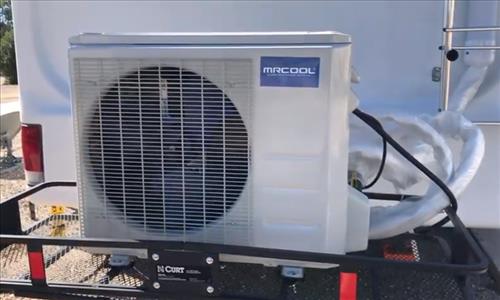
While mini split units have been primarily used in homes, their high efficiency makes them ideal when installed on an RV, trailer, or camper.
They have become very popular with RV and trailer owners since they are much more efficient and work much better than rooftop units.
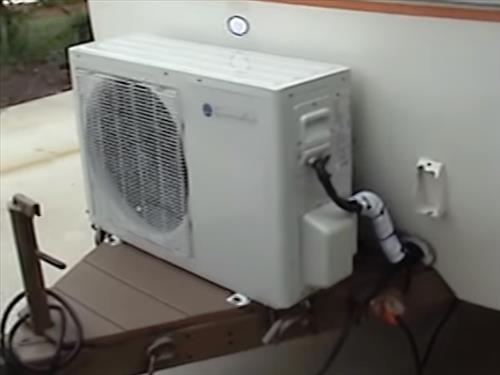
Mini split units are well known for being highly efficient with very good SEER ratings.
They have a very low amp draw since they have such a high SEER rating.
Many homeowners use this high efficiency to drastically reduce heating and cooling costs.
Can a Mini Split be Installed into an RV or Trailer?
Yes, a mini split can be fitted into an RV or Trailer.
It will usually need to be retrofitted by the owner into the trailer or RV, which may not be for everyone.
While most mini split units are not specifically designed for a motor home or RV, many people have installed and retrofitted them into place.
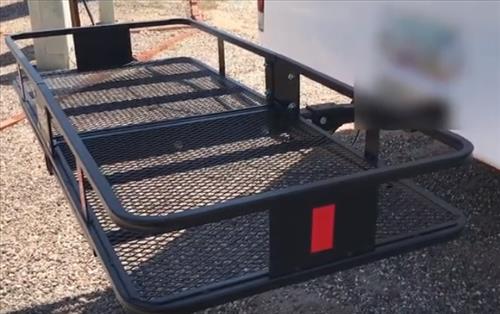
The outside condenser is often set on the tongue of a trailer or a hauling hitch for an RV.
The copper line-set that goes between the two units is usually fed underneath along the frame and up through the floor to the inside unit.
There is no set way when retrofitting a mini split, with no-doubt many creative ways to fit a unit into place.
With that in mind, below are some units and methods others have done to retrofit in a mini split to their RV or trailer.
As always, be sure to read the reviews on Amazon, forums, here, or elsewhere to be sure a unit is a good fit for you.
*This site contains affiliate paid links for which a commission earned.
Our Picks for Best Mini Split AC Heat Pump for an RV or Trailer
- PIONEER
- MRCOOL DIY Series
- Senville
- YMGI Solar Assist Ductless Mini Split Air Conditioner Heat Pump
- HotSpot Energy ACDC12C
Pioneer is a well-known mini split manufacturer with many sizes available, along with 110-volt and 220-volt units.
They have become very popular with many home DIY-type people since they are low-cost and come in a kit for an installation.
Some tools will be needed for an installation, such as a vacuum pump and HVAC gauges, but low-cost budget tools can be used.
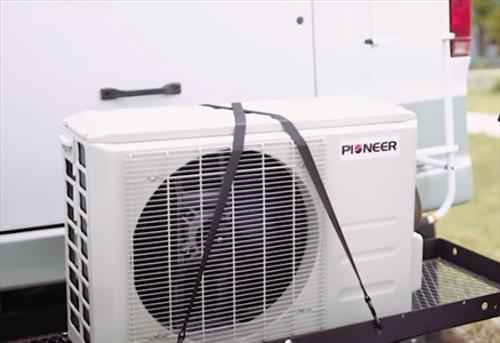
How the outside unit is mounted will need to be thought out with RV units usually using a hitch.
If you are planning on doing an install yourself, Pioneer mini split kits units are worth a look.
Available Here on eBay
MRCOOL mini split kits are also good units set up for the DIY type person.
They have the added feature of having the line–set already set in a vacuum and pre-sealed.
This means there is no need for a vacuum pump or HVAC gauges to set the unit in a vacuum before releasing the refrigerant.
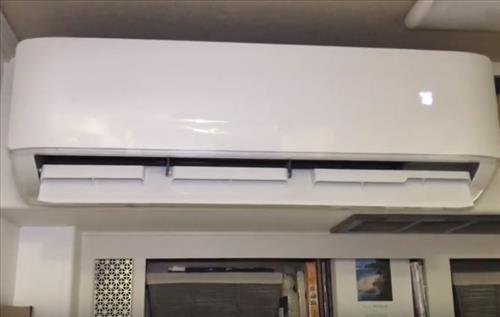
Keep in mind pumping a unit into a vacuum is not difficult, but a Mr. Cool unit would be good for someone very new to mini split installs.
They do cost more compared to budget units but work very well and are the easiest units to install.
Senville is very similar to Pioneer units and comes with different BTU sizes and voltages.
They are also low-cost budget units that come with a full kit for an install, except AC electrical wiring.
Most all kits do not include the electrical AC wiring which will need to be bought separately.
Budget units are great for RV and trailer installs and, when done right, last many years heating and cooling a space.
This unit from YMGI has a 32 SEER rating which is a very good rating.
The high efficiency allows it to use less power which makes it a good unit to use with solar panels.
The kit includes a solar panel that is labeled as solar assist since it will not run the mini split continuously.
As most know, solar panels rely on a cloudless day with a bright sun to reach their full potential.
While the solar panel they include is a nice bonus, it likely would require at least 3-5 such panels to continuously run the unit on a sunny day.
Running the unit from solar panels is very doable but would require more panels, an inverter, and batteries.
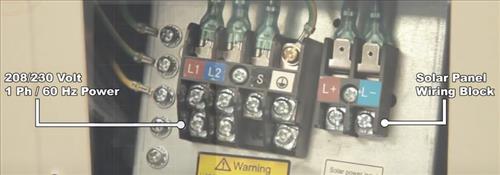
A nice feature for the YMGI is separate wiring for AC power or solar panel power.
The high SEER rating makes the unit a good fit for low power usage, which is ideal in many scenarios, including an RV or camper.
The HotSpot Energy ACDC12C is a different type of unit since it can take power from 12 volt DC or 220 Volt AC source.
It has both 220 Volts AC hookup (Left) and dedicated Solar hookup (Right).
This also makes it ideal for a set up with solar panels.
The unit can be set up to run from 3-6 solar panels (200 Watt each), which can be set on the roof of an RV or trailer.
Max power usage is 960 Watts, with average power usage at 544 WATTS.
It is also a heat pump which means it can cool in the winter and heat in the summer, making it ideal all year round.
The HotSpot ACDC12C is a highly efficient unit that has very low power usage can heat or cool and run from a 12-volts or 220-volt power source.
Summary
Mini Split units are widely used in home additions, garages, or any space that needs to be cooled and heated at a low-cost.
When thought out, they can also make for an ideal RV or trailer setup.
They have a low amp power draw with many units able to be run over a standard extension cord, of course check the amps first.
For example, a 115 volt 9,000 BTU unit I installed pulls roughly 8-9 amps.
A 220-volt unit pulls even fewer amps and is even more efficient.
Of course, be sure to check the required wiring, amp and voltage any unit uses and follow the guidelines in the manual.
Any install for an RV or trailer will need to be thought out more compared to any home installation since it will be on a moving vehicle.
There are many creative solutions to installing a mini split on a motor home.
The installation will need the outside condensing unit set up to blow away heat or cold, while the inside unit will need to be mounted with a bracket on a wall.
Two small copper lines called a line-set would need to be run between the two units along with control wires.
Have you installed a mini split on an RV, trailer, or camper? Let us know below in the comments how the installation went for you.
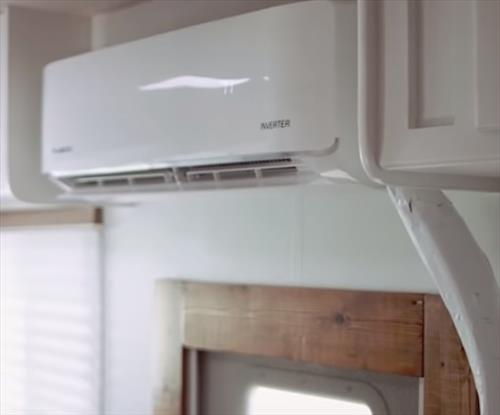
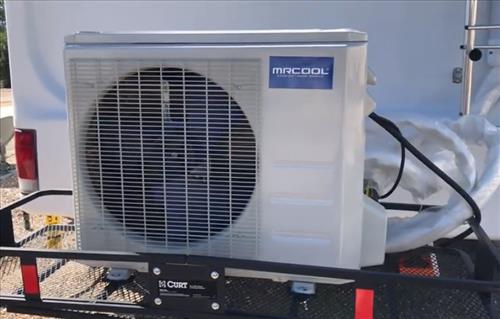
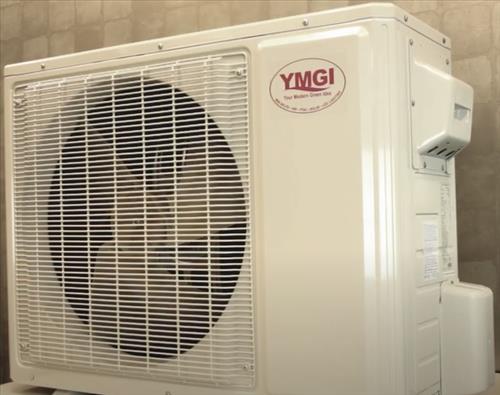
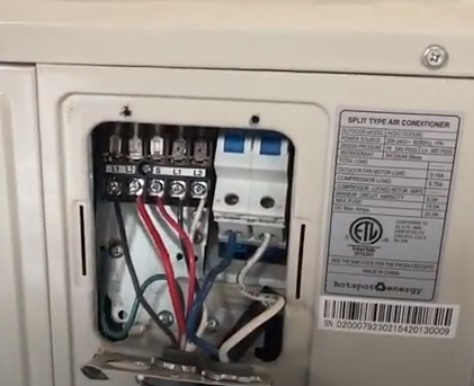
“For example, a 115 volt 9,000 BTU unit I installed pulls roughly 8-9 amps.
A 220-volt unit pulls even fewer amps and is even more efficient.”
We need to compare power drawn (volts x amps), not just amps drawn.
Well done – now I need to convince my wife …..
A point for your ratings needs to be warranty related. I have hears that some of the manufacturers will not stand by their warranty if not professionally installed, or if installed in anything other than a stationary dwelling. I keep hoping to find this info cross referenced somewhere so I don’t need to contact each company that I consider.
Just a tip that I learned the hard way get some kind of cover like a grill cover so that when you travel the fan does not turn because the fan spins too fast when traveling and will explode and also i upgraded to a metal fan